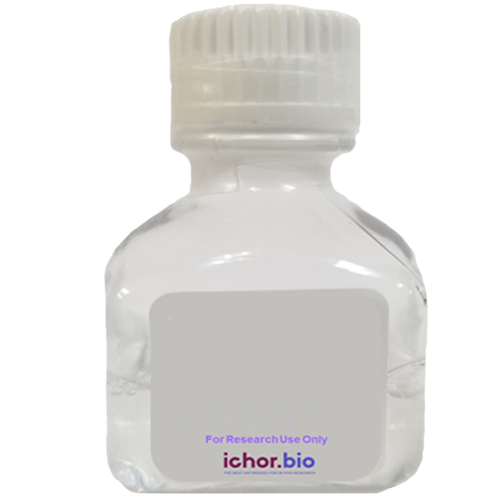Anti-Mouse CD318 In Vivo Antibody – Low Endotoxin (9a2) [ICH1165]
- Sizes: 5mg, 25mg, 50mg, 100mg,
- Category: ichorbio, Low Endotoxin, anti-mouse, anti-human
- Target: CD318
- Clone: 9a2
- Host: Mouse
-
 Datasheet
Datasheet
 Tech Support
Tech Support

PRODUCT DETAILS
SPECIFICATIONS |
|
|---|---|
|
PRODUCT NAME |
Anti-Mouse CD318 In Vivo Antibody - Low Endotoxin (9a2) [ICH1165] |
|
SPECIES REACTIVITY |
Human/Mouse |
|
HOST |
Mouse |
| SPECIFICITY |
Clone 9A2 recognizes an epitope within the extracellular domain of human/mouse CDCP1 |
| PURIFICATION METHOD |
This monoclonal antibody was purified using multi-step affinity chromatography methods such as Protein A or G depending on the species and isotype. |
| ANTIGEN DISTRIBUTION |
CDCP1 is widely expressed in the esophagus, skin, colon, duodenum, stomach and other tissues. |
| IMMUNOGEN |
|
| CONCENTRATION |
|
| FORMULATION |
This monoclonal antibody is aseptically packaged and formulated in 0.01 M phosphate buffered saline (PBS) pH 7.2 - 7.4, 150 mM NaCl with no carrier protein, potassium or preservatives added. BSA and azide free |
| PURITY |
>95% by SDS-PAGE and HPLC |
| ENDOTOXIN |
≤ 1.0 EU/mg as determined by the LAL method |
| AGGRIGATION |
Aggregation level ≤ 5% |
| STORAGE CONDITION |
This antibody is stable for at least one week when stored sterile at 2-8°C. For long term storage aseptically aliquot in working volumes without diluting and store at –80°C. Avoid Repeated Freeze Thaw Cycles. |
TARGET |
|
|---|---|
| TARGET |
CD318 |
| CLONE |
9a2 |
| SYNONYMS |
|
| BACKGROUND |
CDCP1 is a transmembrane glycoprotein of molecular weight 140 kDa. CDCP1 is a ligand for a receptor molecule (CD6) that is expressed on some T-cells and is thought to be involved in T-cell migration and chemotaxis. It has a large extracellular domain that includes two CUB domains, and a smaller intracellular domain. The smaller intracellular domain contains five tyrosine residues (Y707, Y734, Y743, Y762 and Y806). CDCP1 is cleaved next to Arg368 (at the extracellular domain) by serine proteases. This cleavage yields a truncated molecule with a molecular weight of 80 kDa.1 CDCP1 is not typically cleaved In vivo. However, its cleavage can be induced during tumorigenesis or tissue injury.2 CDCP1 acts as a substrate for Src family kinases which exclusively mediate the phosphorylation of CDCP1. In cultured cells, tyrosine phosphorylation of CDCP1 transpires when cells are stimulated to detach via trypsin or EDTA. This detachment is associated with the phosphorylation of CDCP1 along with the simultaneous dephosphorylation of focal adhesion proteins. Conversely, during cellular attachment, CDCP1 is dephosphorylated, while focal adhesion proteins are simultaneously phosphorylated. Furthermore, CDCP1 is suspected to play a role in autoimmune diseases such as encephalomyelitis, multiple sclerosis and inflammatory arthritis.3 |
| UNIPROT |
|
| PATHOGEN TEST |
|
| APPLICATIONS |
Flow Cytometry |
| APPLICATION NOTES |
Each investigator should determine their own optimal working dilution for specific applications. |
| USAGE |
Products are for research use only. Not for use in diagnostic or therapeutic procedures. |


